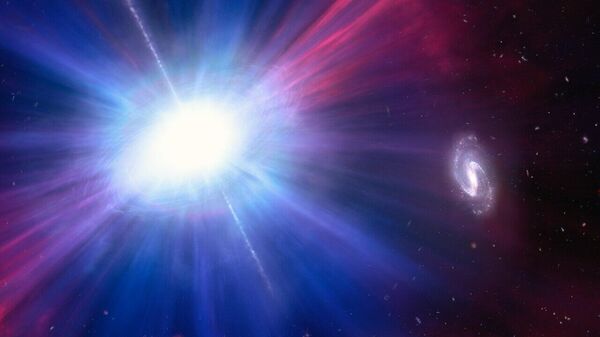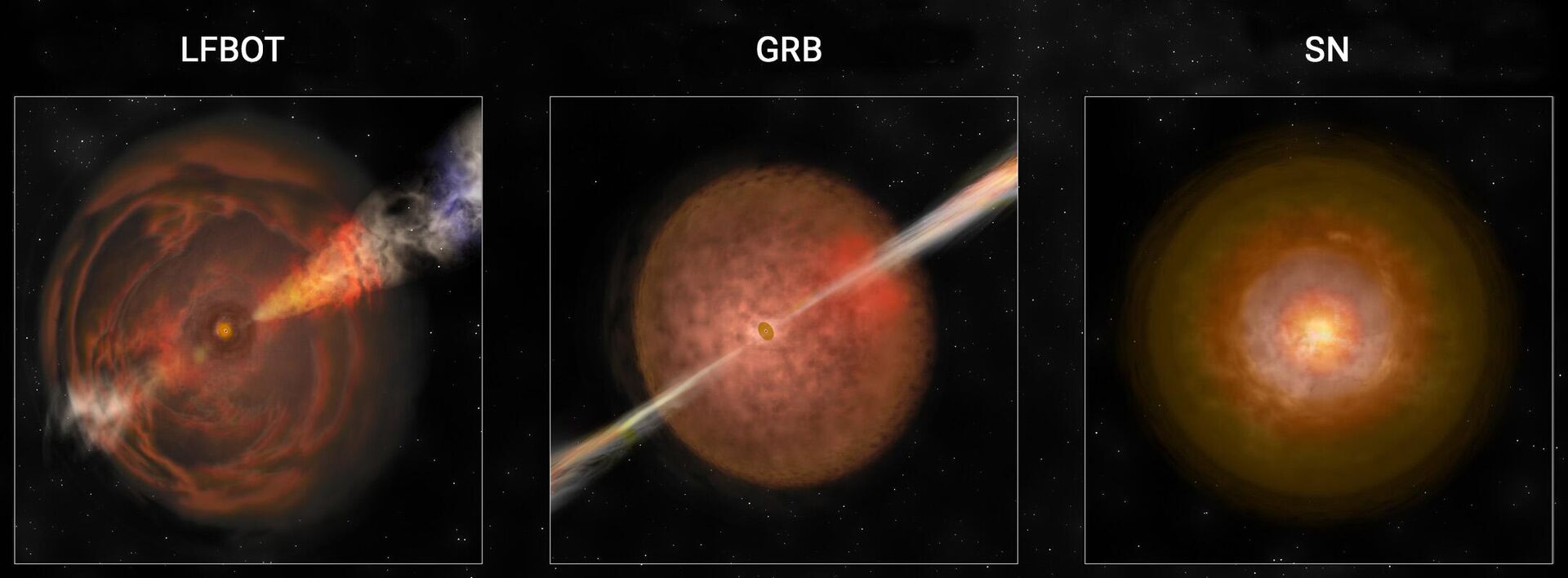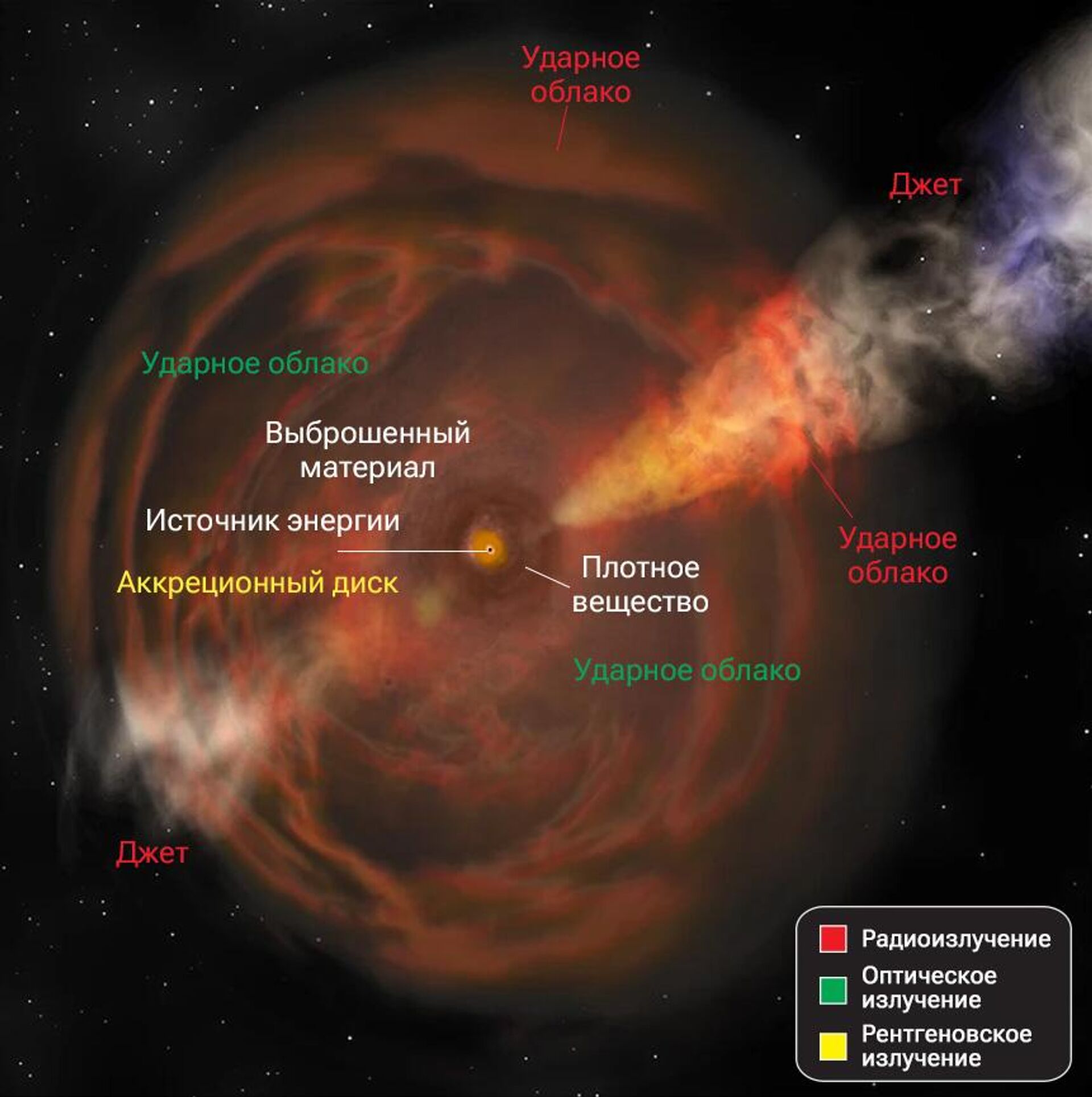
MOSCOW, November 18 , Vladislav Strekopytov. The astronomical event AT2022tsd, which was dubbed the “Tasmanian Devil,” cannot yet be explained. For several months, powerful pulses of electromagnetic radiation were coming from a distant galaxy. The mechanism for the formation of such a huge amount of energy in the Universe is unknown.
Mysterious transients
Astronomers periodically record large-scale energy releases in space. Some are accompanied by gamma radiation. Short gamma-ray bursts occur when two neutron stars, a black hole and a neutron star, or two black holes merge. Duration — from ten milliseconds to two seconds. Long gamma-ray bursts, from two seconds to several hours, occur during a supernova explosion, when the rapidly rotating core of a massive star collapses — is rapidly compressed under the influence of gravitational forces.
Ground-based and space observatories record gamma-ray bursts almost daily of varying strength and duration. Usually these are narrow beams of powerful radiation coming to us from distant galaxies. Sometimes, much less frequently, brighter flashes occur in the blue part of the optical range of the electromagnetic spectrum. These are called LFBOT (luminous fast blue optical transients).
They are associated with an as yet unknown high-energy astrophysical process that releases one to two orders of magnitude more energy than gamma-ray bursts.
In the beginning there was a “Cow”
The first LFBOT in June 2018 was recorded by the ATLAS robotic telescope system, designed to detect potentially dangerous asteroids. Later, 18 major observatories reported seeing it too.
The event, listed as AT2018cow, was very different from gamma-ray bursts or supernovae in its spectrum, brightness and speed. “Cow,” as it came to be called by its abbreviation, was a hundred times brighter than any supernova. This flare reached its maximum luminosity in a matter of days, and then faded just as quickly — for supernovae this takes weeks.
Over the next five years, astronomers identified several more LFBOTs: Koala (ZTF18abvkwla — Koala), Camel (ZTF20acigmel — Camel) and Finch (AT2023fhn — Finch). But we were never closer to understanding the nature of the phenomenon. There are only versions. Some believe that LFBOTs are failed supernovae that turned into a black hole or neutron star before exploding. Others talk about the collapse of a supergiant star, the result of mutual absorption of cosmic objects or their interaction with very hot and luminous massive Wolf-Rayet stars.
The process of emergence of LFBOT is described as follows. At the end of their lives, massive stars turn into black holes or neutron stars. At the center of a black hole accreting surrounding material or a wildly spinning neutron star is an energy source. Charged particles produced in a stellar explosion spiral around lines of strong magnetic fields, and the wavelength of their radiation stretches as the material spreads. Therefore, the jets — two jets of plasma escaping from the center of the object and directed in opposite directions — are blurry with LFBOT, not as compact as in the case of a supernova.
This model is preliminary and very conditional. New observations are needed to clarify. But another LFBOT event only added to the mystery.
«This pushes the boundaries of physics»
In a recently published study, scientists led by astronomer Anna Ho of Cornell University analyze the bright optical transient AT2022tsd, detected in September 2022. The source is about a billion light years away. The initial flash, similar to LFBOT, was recorded by the ZTF (Zwicky Transient Facility) wide-angle camera at the Palomar Observatory in California. But then things got weird.
Typically, after a powerful burst of energy, LFBOTs quickly fade out. This time the radiation disappeared and then appeared. And subsequent outbreaks were sometimes brighter than the previous ones. Given the abbreviations, the event was called the «Tasmanian Devil» — after the Australian animal, which is particularly unpredictable.
Using Anna Ho's software, they identified at least 14 irregular outbreaks of AT2022tsd over four months of observations. It was calculated that during this time the Tasmanian Devil emitted more energy than an entire galaxy of hundreds of billions of stars, such as the Sun.
“LFBOT is an exotic event in itself, but what we saw was especially strange,” Dr. Ho was quoted as saying in the press release. “Instead of gradually fading away, the source flared up again and again.”
“This has never been observed before,” continues another study author, Professor Geoff Cook from Swinburne University of Technology in Australia. “The mechanism for releasing such a huge amount of energy is unknown. Light travels at a finite speed. How quickly it flashes and goes out puts limits on the size of the source. It turns out that all this huge energy is generated by something relatively small. This expands the boundaries of physics.»
The Mystery of the «Tasmanian Devil»
A gamma-ray burst and a supernova explosion are considered one-time events that end the life of a star. The resulting black hole or neutron star accumulates a huge amount of matter, and the original object turns into a “stellar corpse”. The fact that this «corpse» continued to flash has baffled researchers.
The main version is an unsuccessful supernova explosion. A star of about 20 solar masses burned up all its internal fuel and collapsed without an explosion, and the resulting black hole or neutron star ended up inside the cloud of supernova material.
«If they are at the center of LFBOT, powerful energy jets emanating from their poles could explain the flash. As the object rotates, these jets would repeatedly fly out in the direction of the Earth,» Ho argues.
Another possibility is an intermediate-mass black hole that gradually absorbs one or more stars. In this case, the jets can be powered by the accretion of stellar matter onto the black hole.
Fifteen observatories around the world participate in the LFBOT monitoring program. In the summer of 2024, they will be joined by the Vera Rubin Observatory, which is under construction. The digital camera of its unique wide-angle telescope is capable of taking pictures of the visible sky every 20 seconds. With such productivity, it will be possible to detect a hundred times more cosmic flares than now.






















































Свежие комментарии